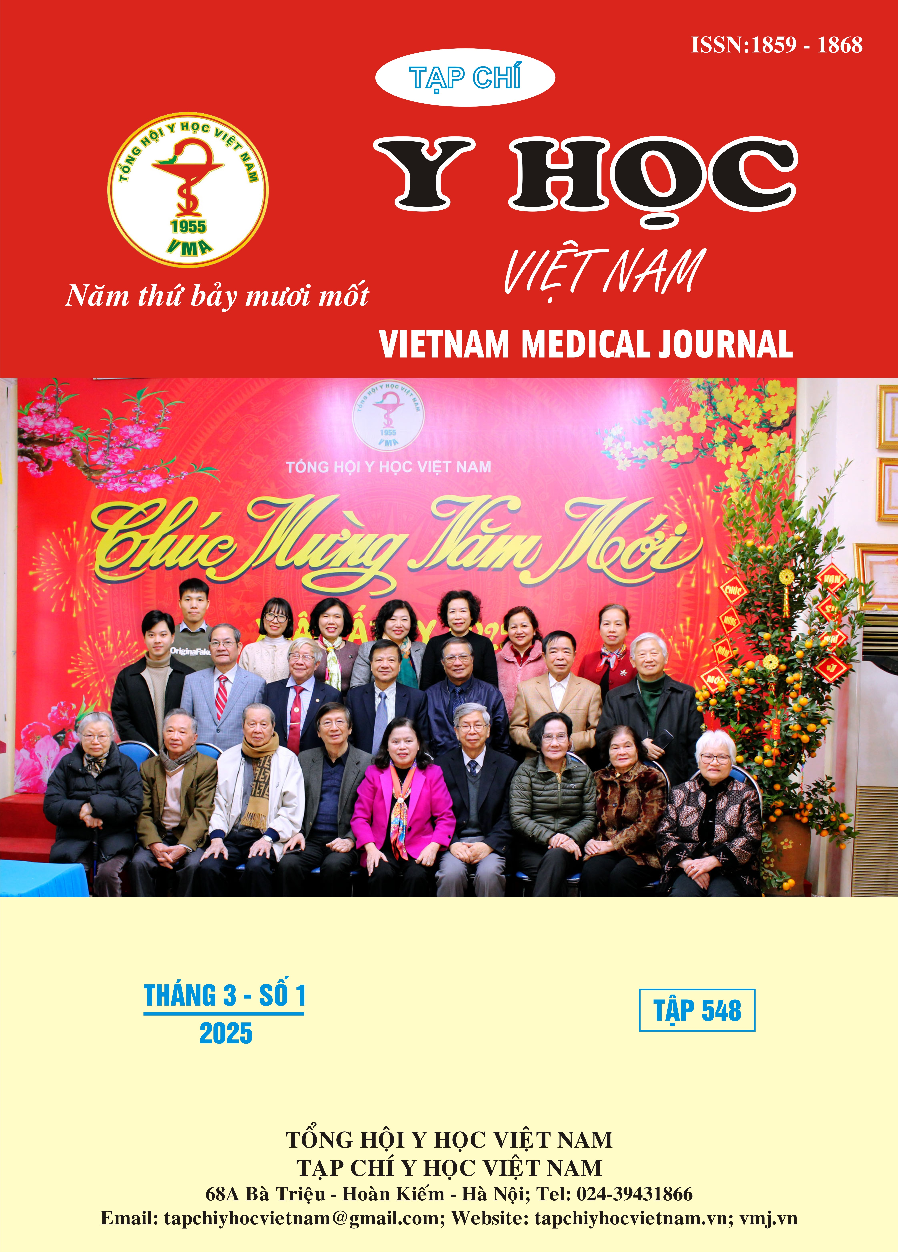MICROBIAL AGENTS CAUSING COMMUNITY-ACQUIRED PNEUMONIA WITH POOR RESPONSE IN CHILDREN AT DONG THAP GENERAL HOSPITAL
Main Article Content
Abstract
Background: Poor response to treatment of community-acquired pneumonia (CAP) in children is an issue that needs attention. Objective: To determine the percentage of microbial agents causing CAP with poor response in children at Dong Thap General Hospital; to investigate the relationship between groups of microbial agents and clinical and paraclinical characteristics. Materials and methods: Cross-sectional descriptive study of 93 children with CAP at Dong Thap General Hospital from June 2024 to Feb 2025. All of children had been conducted nasotracheal aspiration and performed real-time PCR (polymerase chain reaction) to find 70 microbial agents. Results: Most children were under 24 months old (74.1%), the male: female ratio was approximately 2:1. The rate of detection of microbial agents via real-time PCR was 81/93 (87.1%); In which, the majority had the presence of bacteria (66.7%). Streptococcus pneumoniae and Haemophilus influenzae were the two leading bacterial pathogens with rates of 46.2% and 20.9%, respectively. Children with CAP mainly had clinical symptoms such as crackles (100%), cough (93.8%), and rapid breathing (82.7%). There was no difference in clinical and paraclinical symptoms between the bacterial and viral infection groups (p>0.05), except for high neutrophils in the bacterial infection group (p=0.007). Conclusion: The presence of bacteria is an important factor to consider in the causes of CAP in children. However, except for high neutrophils in the bacterial infection group, there were no clinical and paraclinical symptoms that helped differentiate bacterial and viral agents causing CAP in children.
Article Details
Keywords
Community-acquired pneumonia, poor response, children, Dong Thap
References
2. Nguyễn Ngọc Văn (2023), “"Đặc điểm lâm sàng viêm phổi do virus ở trẻ em dưới 5 tuổi tại bệnh viện nhi Trung ương”, Tạp chí Nhi khoa, Tập 16(1), pp. 42–47.
3. Bùi Lê Hữu Bích Vân (2016), “Tác nhân gây viêm phổi không đáp ứng với điều trị kháng sinh ban đầu ở trẻ dưới 5 tuổi tại khoa nội tổng quát 2 bệnh viện Nhi Đồng 1”, Y học Thành phố Hồ Chí Minh, Tập 20(1), pp. 41–48.
4. Bhuiyan M.U., Blyth C.C., West R. et al. (2019), “Combination of clinical symptoms and blood biomarkers can improve discrimination between bacterial or viral community-acquired pneumonia in children”, BMC pulmonary medicine, 19(1), pp. 71.
5. Marcelo C. Scotta Paulo J.C. Marostica, Renato T. Stien (2019), “Pneumonia in children - Slowli resolving pneumonia”, Kendig’s Disorders of the Respiratory Tract in Children, Philadelphia, PA, pp. 1597–1644.
6. World Health Organization “Pneumonia in children”, , accessed: 03/03/2025.
7. World Health Organization (2013), Pocket book of hospital care for children: guidelines for the management of common childhood illnesses, World Health Organization, Geneva.


